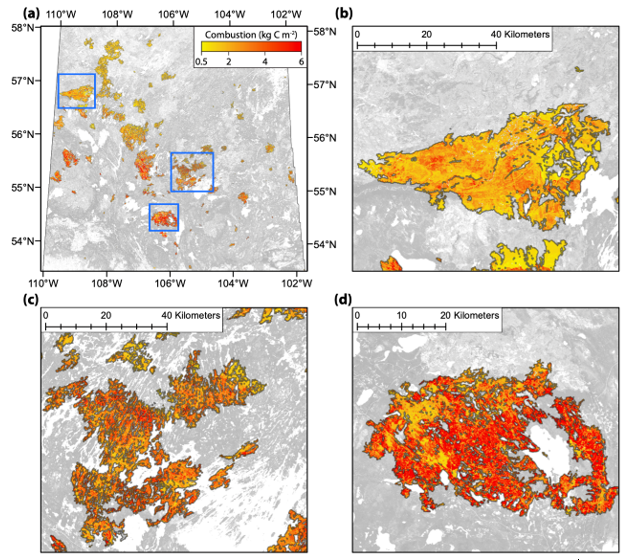ABoVE: Spatial Estimates of Carbon Combustion from Wildfires across SK, Canada, 2015
This dataset from the Arctic-Boreal Vulnerability Experiment (ABoVE) provides spatial estimates of carbon combustion from 2015 wildfire burned areas across Saskatchewan, Canada, on a 30 m grid. Carbon combustion (kg C/m2) was derived from post-fire field measurements of carbon stocks completed in 2016 at 47 stands that burned during three 2015 Saskatchewan wildfires and at 32 unburned stands in adjacent areas. The study areas covered two ecozones (Boreal Plains and Boreal Shield), two stand-replacing history types (fire and timber harvest), three soil moisture classes (xeric, mesic, and subhygric), and three stand dominance classifications (coniferous, deciduous, and mixed). To spatially extrapolate estimates of combustion to all 2015 fires in Saskatchewan, a predictive radial support vector machine model was trained on the 47 burned stands with associated environmental variables and geospatial predictors and applied to historical fire areas. The dataset also includes uncertainty estimates represented as per pixel standard deviations of model estimates. This dataset quantifies carbon losses from wildfires in the southern boreal forests of North America and helps to assess the spatial heterogeneity in emissions.
ABoVE is a NASA Terrestrial Ecology Program field campaign being conducted in Alaska and western Canada, for 8 to 10 years, starting in 2015. Research for ABoVE links field-based, process-level studies with geospatial data products derived from airborne and satellite sensors, providing a foundation for improving the analysis, and modeling capabilities needed to understand and predict ecosystem responses to, and societal implications of, climate change in the Arctic and Boreal regions. See all ORNL DAAC data from ABoVE.
Data Citation: Potter, S., B.M. Rogers, and C. Dieleman. 2020. ABoVE: Spatial Estimates of Carbon Combustion from Wildfires across SK, Canada, 2015. ORNL DAAC, Oak Ridge, Tennessee, USA. https://doi.org/10.3334/ORNLDAAC/1787

